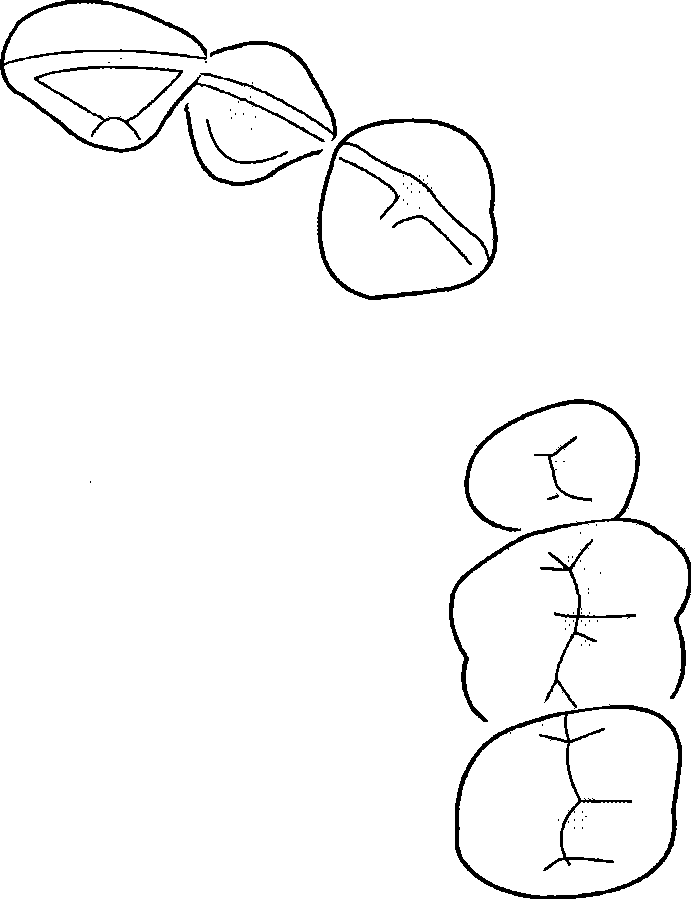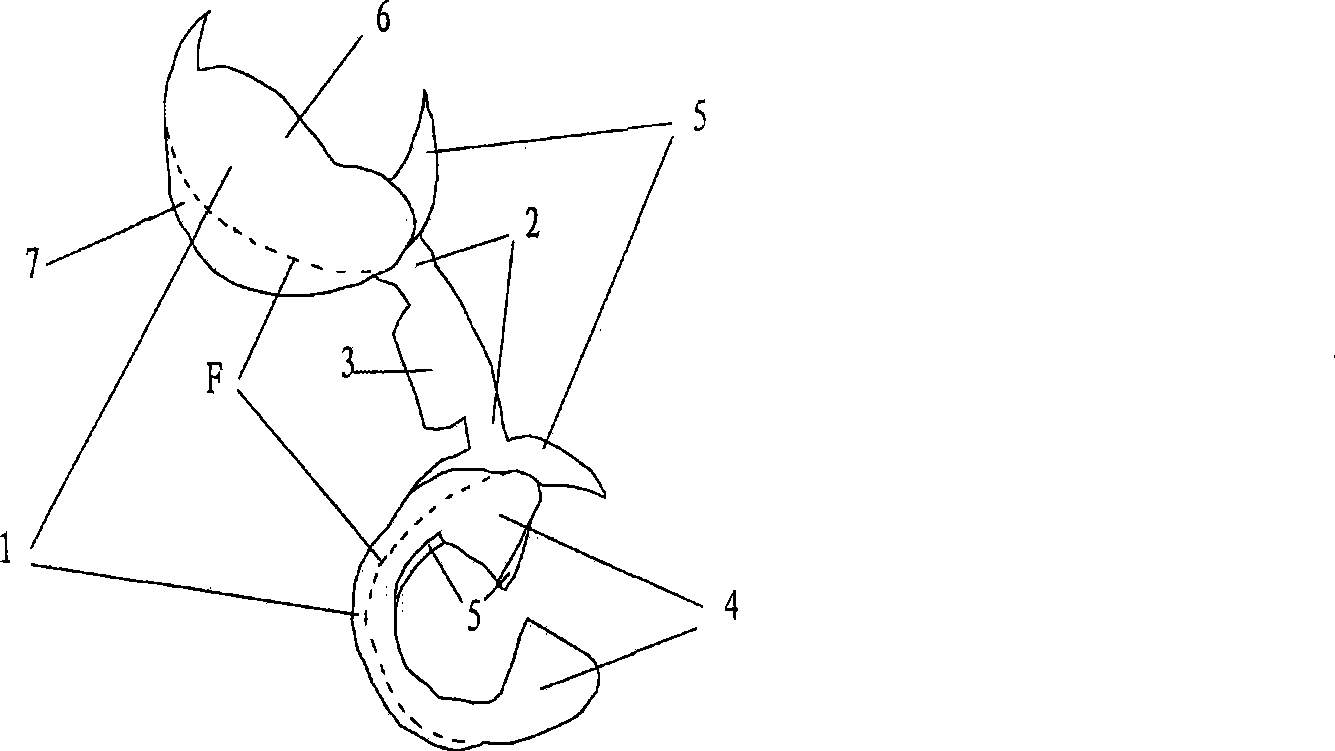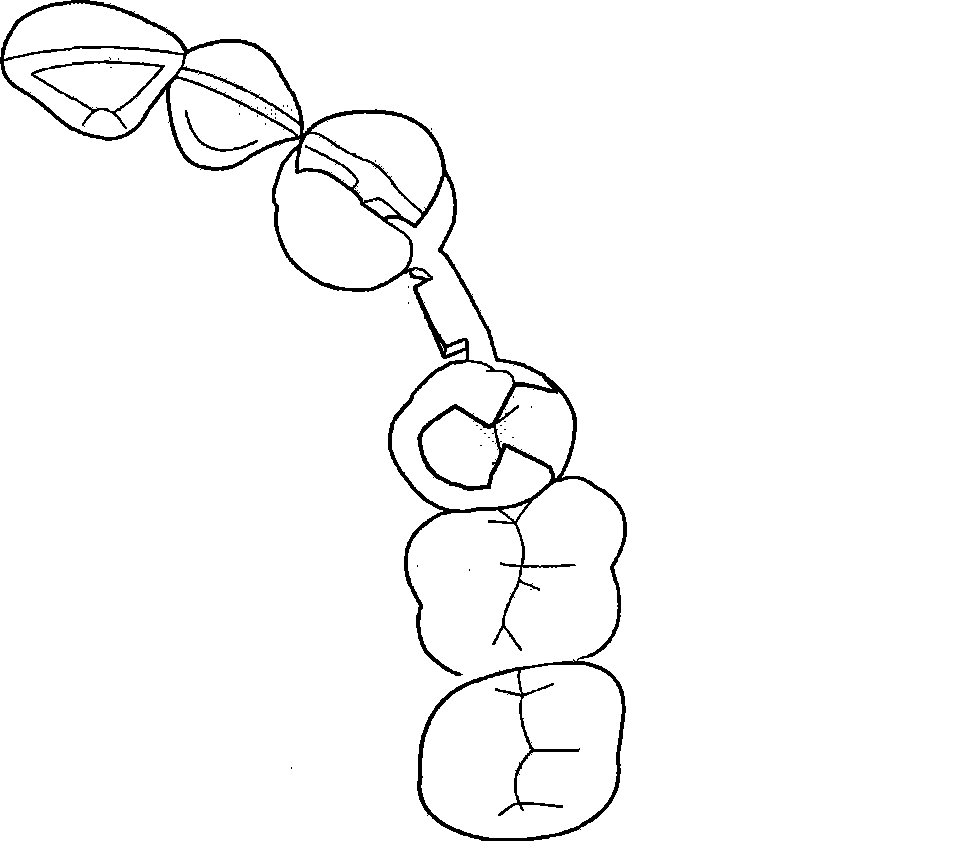Split tooth prosthesis for fixing and repairing deficient toot and production method thereof
A technology of fixed restoration and dental restoration, which is applied in the fields of dental prosthesis, dentistry, medical science, etc. It can solve the problems of foreign body sensation in patients and the difficulty of restoring the occlusal state of restorations accurately, so as to achieve good recovery and complete pulp activity. Healthy and less foreign body sensation
- Summary
- Abstract
- Description
- Claims
- Application Information
AI Technical Summary
Problems solved by technology
Method used
Image
Examples
Embodiment 1
[0040] Figure 1~5 It is a specific embodiment of using the present invention to repair a case of missing the first bicuspid tooth on the upper left.
[0041] The dental restoration of this embodiment includes an integral bracket and a bolted pontic tooth, and the integral bracket is bonded and fixed with the abutment teeth on both sides adjacent to the missing tooth by enamel bonding; the bolted bridge The bottom of the body tooth is provided with an inwardly concave groove, and the bolted pontic tooth is fixed by convex-concave bonding with the integral bracket through the groove, and forms a concave surface contact with the adjacent surface of the abutment tooth.
[0042] The integral support includes a wing plate 1, a connecting body 2, a base profile extension 4 formed by the extension of the upper part of the wing plate, and an undercut lower portion 5 formed by the extension of the lower part of the wing plate.
[0043] The wing plate 1 is located at the two ends of the integr...
Embodiment 2
[0056] Figure 6-10 It is a specific embodiment of using the present invention to repair the missing first molar on the left.
[0057] In this embodiment, the overall shape of the bracket forms a large S shape in the posterior teeth area where aesthetic requirements are not high.
[0058] The material for making the integral stent can be any one of precious metals, non-precious metals, zirconia, alumina, synthetic diamonds, and corundum.
[0059] Since the first molars have to bear greater occlusal force, and the aesthetic requirements of the second bicuspids and second molars as abutments are lower, in this embodiment, the area of the wing plate joint face and edge part is enlarged. , Increase the base profile extension 4 to improve retention. In addition, two bolted protrusions 3 with opposite protrusion directions are formed on the connecting body, which not only enlarges the bonding area with the bolted pontic tooth, prevents the bolted pontic tooth from loosening, twisting, r...
Embodiment 3
[0062] Figure 11-15 It is a specific embodiment of using the present invention to simultaneously repair the missing cases of the first molar of the second upper left bicuspid.
[0063] The wings 1 of the integral support can be increased or decreased on the buccal and lingual side according to the requirements of aesthetics and function. In the case of low aesthetic requirements, the overall shape of the bracket forms a large S shape in the posterior teeth area.
[0064] When restoring the second bicuspid first molar at the same time, the requirements for the abutment are higher, except for the above-mentioned expansion of the area of the wing plate joint face and edge part, the increase of the base shape extension, and the expansion of the wing plate covering the non-functional area of the joint surface In addition to the basic operation of the area, abutment teeth are added to further improve the retention force, which is more conducive to the uniform distribution of stress....
PUM
 Login to View More
Login to View More Abstract
Description
Claims
Application Information
 Login to View More
Login to View More - R&D
- Intellectual Property
- Life Sciences
- Materials
- Tech Scout
- Unparalleled Data Quality
- Higher Quality Content
- 60% Fewer Hallucinations
Browse by: Latest US Patents, China's latest patents, Technical Efficacy Thesaurus, Application Domain, Technology Topic, Popular Technical Reports.
© 2025 PatSnap. All rights reserved.Legal|Privacy policy|Modern Slavery Act Transparency Statement|Sitemap|About US| Contact US: help@patsnap.com



